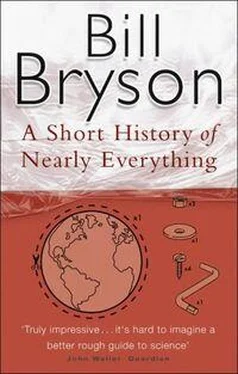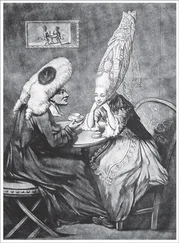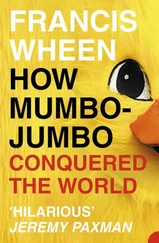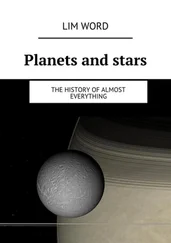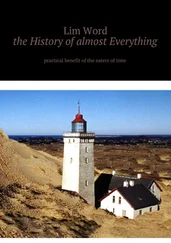“was chemically destined to be.” Gould, Eight Little Piggies , p. 328.
“when tens of thousands of Australians . . .” Sydney Morning Herald , “Aerial Blast Rocks Towns,” September 29, 1969; and “Farmer Finds ‘Meteor Soot,’ ” September 30, 1969.
“it was studded with amino acids . . .” Davies, pp. 209-10.
“A few other carbonaceous chondrites . . .” Nature , “Life’s Sweet Beginnings?” December 20-27, 2001, p. 857, and Earth , “Life’s Crucible,” February 1998, p. 37.
“at the very fringe of scientific respectability . . .” Gribbin, In the Beginning , p. 78.
“suggested that our noses evolved . . .” Gribbin and Cherfas, p. 190.
“Wherever you go in the world . . .” Ridley, Genome , p. 21.
“We can’t be certain that what you are holding . . .” Victoria Bennett interview, Australia National University, Canberra, August 21, 2001.
“full of noxious vapors . . .” Ferris, Seeing in the Dark , p. 200.
“the most important single metabolic innovation . . .” Margulis and Sagan, p. 78.
“Our white cells actually use oxygen . . .” Note provided by Dr. Laurence Smaje.
“But about 3.5 billion years ago . . .” Wilson, The Diversity of Life , p. 186.
“This is truly time traveling . . .” Fortey, Life , p. 66.
“the slowest-evolving organisms on Earth . . .” Schopf, p. 212
“Animals could not summon up the energy to work,” Fortey, Life , p. 89.
“nothing more than a sludge of simple microbes.” Margulis and Sagan, p. 17.
“you could pack a billion . . .” Brown, The Energy of Life , p. 101.
“Such fossils have been found just once . . . ” Ward and Brownlee, p. 10.
“little more than ‘bags of chemicals’. . .” Drury, p. 68.
“to fill eighty books of five hundred pages.” Sagan, p. 227.
“Louis Pasteur, the great French chemist . . .” Biddle, p. 16.
“a herd of about one trillion bacteria . . .” Ashcroft, p. 248; and Sagan and Margulis, Garden of Microbial Delights , p. 4.
“Your digestive system alone . . . ” Biddle, p. 57.
“no detectable function at all.” National Geographic , “Bacteria,” August 1993, p. 51.
“about 100 quadrillion bacterial cells.” Margulis and Sagan, p. 67.
“We couldn’t survive a day without them.” New York Times , “From Birth, Our Body Houses a Microbe Zoo,” October 15, 1996, p. C3.
“Algae and other tiny organisms . . . ” Sagan and Margulis, p. 11.
“ Clostridium perfringens, the disagreeable little organism . . .” Outside , July 1999, p. 88.
“a single bacterium could theoretically produce more offspring . . . ” Margulis and Sagan, p. 75.
“a single bacterial cell can generate . . .” De Duve, A Guided Tour of the Living Cell , vol. 2, p. 320.
“all bacteria swim in a single gene pool.” Margulis and Sagan, p. 16.
“microbes known as Thiobacillus concretivorans . . .” Davies, p. 145.
“Some bacteria break down chemical materials . . . ” National Geographic , “Bacteria,” August 1993, p. 39.
“like the scuttling limbs of an undead creature . . .” Economist , “Human Genome Survey,” July 1, 2000, p. 9.
“Perhaps the most extraordinary survival . . . ” Davies, p. 146.
“their tireless nibblings created the Earth’s crust.” New York Times , “Bugs Shape Landscape, Make Gold,” October 15, 1996, p. C1.
“it would cover the planet . . . ” Discover , “To Hell and Back,” July 1999, p. 82.
“The liveliest of them may divide . . .” Scientific American , “Microbes Deep Inside the Earth,” October 1996, p. 71.
“The key to long life . . . ” Economist , “Earth’s Hidden Life,” December 21, 1996, p. 112.
“Other microorganisms have leapt back to life . . . ” Nature , “A Case of Bacterial Immortality?” October 19, 2000, p. 844.
“claimed to have revived bacteria frozen in Siberian permafrost . . . ” Economist , “Earth’s Hidden Life,” December 21, 1996, p. 111.
“But the record claim for durability . . .” New Scientist , “Sleeping Beauty,” October 21, 2000, p. 12.
“The more doubtful scientists suggested . . .” BBC News online, “Row over Ancient Bacteria,” June 7, 2001.
“Bacteria were usually lumped in with plants . . .” Sagan and Margulis, p. 22.
“In 1969, in an attempt to bring some order . . .” Sagan and Margulis, p. 23.
“By one calculation it contained . . .” Sagan and Margulis, p. 24.
“only about 500 species of bacteria were known . . .” New York Times , “Microbial Life’s Steadfast Champion,” October 15, 1996, p. C3.
“Only about 1 percent will grow in culture.” Science , “Microbiologists Explore Life’s Rich, Hidden Kingdoms,” March 21, 1997, p. 1740.
“like learning about animals from visiting zoos.” New York Times , “Microbial Life’s Steadfast Champion,” October 15, 1996, p. C7.
“Woese . . . ‘felt bitterly disappointed.’ ” Ashcroft, pp. 274-75.
“Biology, like physics before it . . . ” Proceedings of the National Academy of Sciences , “Default Taxonomy; Ernst Mayr’s View of the Microbial World,” September 15, 1998.
“Woese was not trained as a biologist . . .” Proceedings of the National Academy of Sciences , “Two Empires or Three?” August 18, 1998.
“Of the twenty-three main divisions of life . . .” Schopf, p. 106.
“microbes would account for at least 80 percent . . .” New York Times , “Microbial Life’s Steadfast Champion,” October 15, 1996, p. C7.
“the most rampantly infectious organism on Earth . . .” Nature , “Wolbachia: A Tale of Sex and Survival,” May 11, 2001, p. 109.
“only about one microbe in a thousand . . .” National Geographic , “Bacteria,” August 1993, p. 39.
“microbes are still the number three killer . . .” Outside , July 1999, p. 88.
“once caused terrifying epidemics and then disappeared . . . ” Diamond, Guns, Germs and Steel , p. 208.
“a disease called necrotizing fasciitis . . .” Gawande, Complications , p. 234.
“The time has come to close the book . . .” New Yorker , “No Profit, No Cure,” November 5, 2001, p. 46.
“some 90 percent of those strains . . . ” Economist , “Disease Fights Back,” May 20, 1995, p. 15.
“in 1997 a hospital in Tokyo reported the appearance . . .” Boston Globe , “Microbe Is Feared to Be Winning Battle Against Antibiotics,” May 30, 1997, p. A7.
“America’s National Institutes of Health . . .” Economist , “Bugged by Disease,” March 21, 1998, p. 93.
“Hundreds, even thousands of people . . .” Forbes , “Do Germs Cause Cancer?” November 15, 1999, p. 195.
Читать дальше
